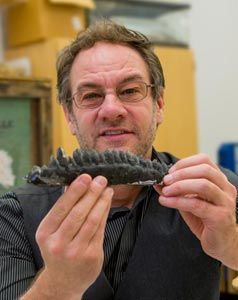When it comes to the three-horned dinosaur called the Triceratops, science is showing the ancient creatures might have been more complex than we thought.
In fact, their teeth were far more intricate than any reptile or mammal living today.
Lehigh University mechanical engineer Brandon Krick and biological scientist Gregory Erickson of the University of Florida joined a multi-university team composed of engineers and paleontologists to determine that the Triceratops developed teeth that could finely slice through dense material, giving them a richer and more varied diet than modern-day reptiles.
The team outlined the findings of their study in the journal Science Advances.
Today, reptilian teeth are constructed in such a way that they are used mostly for seizing food — whether plant or animal — and then crushing it. The teeth do not occlude — or come together — like those of mammals. In essence, they can’t chew. The teeth of most herbivorous mammals self wear with use to create complex file surfaces for mincing plants.
“It’s just been assumed that dinosaurs didn’t do things like mammals, but in some ways, they’re actually more complex,” Erickson said.
Erickson, who has been studying the evolution of dinosaurs for years, became interested in looking at dinosaurs’ teeth several years ago and suspected that they had some unique properties. But, the technology to really discover what they were capable of did not exist.
Fast-forward a few years and engineer Brandon Krick entered the picture.
Krick, an assistant professor of mechanical engineering at Lehigh, specializes in a relatively new area of materials science called tribology. Tribology is the science of how surfaces of materials interact while in motion.
The two of them, accompanied by scientists at University of Florida, University of Pennsylvania and the American Museum of Natural History, set out to find out what exactly these teeth were made of and how they worked.
What Krick and his team of engineers, including Lehigh graduate student Mark Sidebottom, found was that the material properties of the teeth were remarkably preserved in 66 million year old teeth.
The work was funded by the National Science Foundation.
Read the full story at the Lehigh University News Center.


